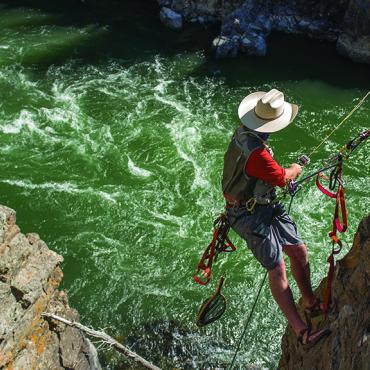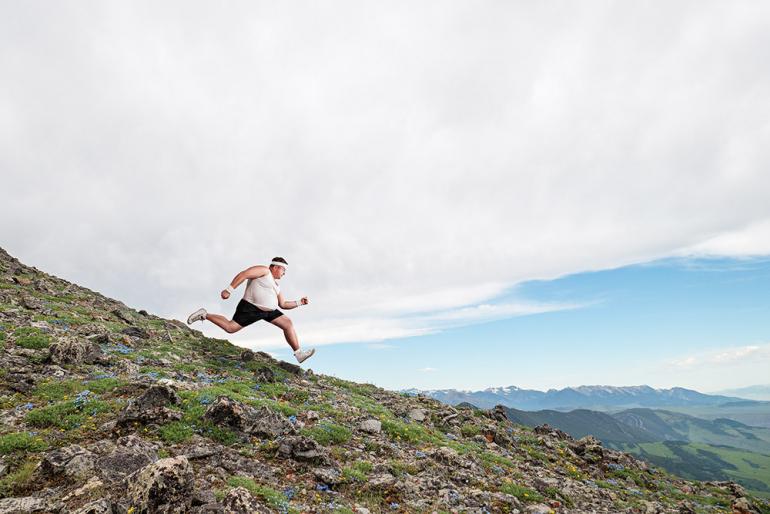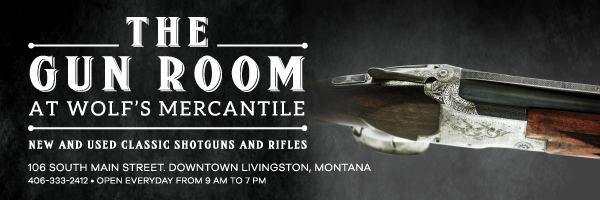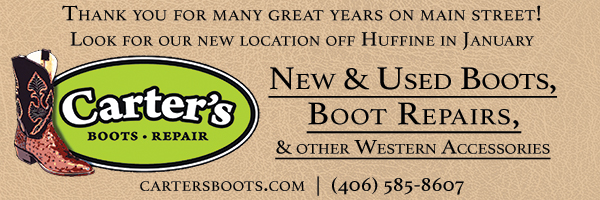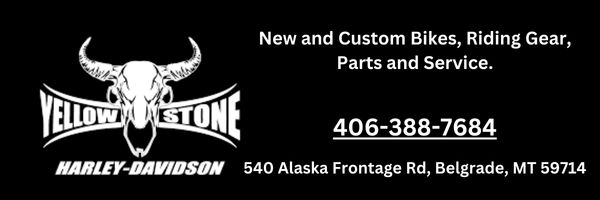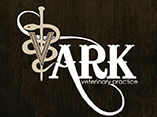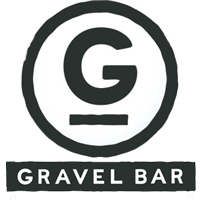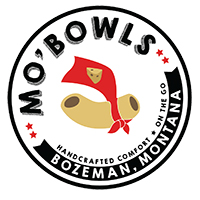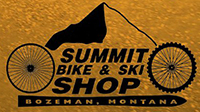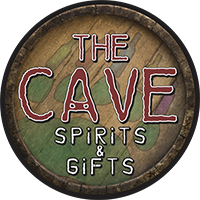Race to the Bottom
Downhill running picks up speed.
Mountain culture has long celebrated those who can go farther, faster, longer. When it comes to trail running, the titans are tall, wiry specimens who drink green smoothies and pontificate about mileage, elevation gain, and VO2 max. But things are changing. Bozeman’s population has skyrocketed over the last decade, bringing in droves of people with different body types. One in particular is finding its wings (or legs, rather) in southwest Montana: the downhill athlete, a breed built for the race to the bottom.
Shorter and stockier than traditional runners, with a flexible attitude toward nutrition, these brutes bring a whole new element to mountain races. And they’re doing so with a chip on their shoulders. “We got tired of the body stigma associated with trail running,” Nan Dirthal says, “and being told that we're out of shape. Is a circle not a shape?” A former collegiate softball player, Dirthal moved to Bozeman from Missouri in 2017, when she noticed the craft-brew scene taking off. “Every night at the brewery,” she says, “I’d see these scrawny runners come in, talking about how they just ran to the top of Mount Baldy. Up, up, up—why is elevation gain everything to these pencil-necks? What are they doing that’s so impressive? Not to take anything away from them, but let’s call a spade a spade. They’re hikers.”
'Why is elevation gain everything to these pencil-neck mountain athletes? What are they doing that’s so impressive? Not to take anything away from them, but let’s call a spade a spade. They’re hikers.'
Dirthal decided to rally her stoutest peers and form a community nonprofit, Thick Runners Opposing Lanky Labels (TROLL). Comprised mainly of CrossFitters, older dads, and Harley-Davidson riders, their mission is to make running more inclusive, and to make huskier folks feel more equal in the outdoors. They do this by shining a spotlight on mountain-running’s most overlooked aspect—the descent. “Downhill athletes have been neglected, marginalized even,” Dirthal says. “Becoming a TROLL is a way to level the playing field.”
And level it they did. The TROLLs moved away from popular trail races like the Ridge Run and the Rut, creating their own downhill-oriented events: the Blackmore Blackout, Storm Castle Cartilage-Crusher, and the Baldy Bomber. “Our rounder bodies and thicker musculature are better suited to an irregular environment,” Dirthal says. These roughshod race series are designed to bring running back to its roots; something more akin to what our primitive human ancestors might have experienced while running down animals. Competitors can get to the top any way they’d like in as much time as they need, but when the race starts, it’s a flat-out sprint to the bottom—and by the most direct route. Gallatin Orthopedics is a banner sponsor; they pre-order knee braces, crutches, and diabetes test kits to dole out at the finish line. This summer, TROLL has arranged for on-site cortisone injections in lieu of post-race tattoos.
The TROLLs moved away from popular trail races like the Ridge Run and the Rut, creating their own downhill-oriented events: the Blackmore Blackout, Storm Castle Cartilage-Crusher, and the Baldy Bomber.
But just how different is this from a regular trail race? We asked Hugh Jarms, a truck driver and former offensive lineman for the Bobcats. “I’ve never stood a chance in a normal race,” he explains. “The little twig-legs always destroy me. But at the top of Storm Castle last year, when I put my head back and let out a primal roar that echoed off the canyon walls, they finally gave me the respect I deserve. I barreled downslope like those crazy cheese-rollers in England. With my lower center of gravity, I could duck branches, tuck and roll, and bounce off trees. Those rickety skeletons didn’t stand a chance.”
Steele Yogherl, a Swedish underwear model and winner of 56 ultramarathons, agrees. “As a running champion, I thought I would win the Blackmore Blackout no problem, especially when I saw people chugging alfredo-sauce smoothies at the starting line,” Yogherl says. “But when that whistle went off, all hell broke loose. It was like a Braveheart battle scene, minus the kilts—thankfully.” Only half the participants crossed the finished line, while the other half failed to reach it due to injury. One runner was deemed too drunk to finish. “These folks are fearless,” Yogherl continues. “They didn’t hesitate to hurl themselves off cliffs or roll down scree fields if they thought it would give them an edge. When I saw them explode out of the gate, I ate a big fat slice of gluten-free humble pie.”
'I was built for bouncing off stone.'
Yogherl says he appreciates what the TROLLing community is doing, but points out that his wife won’t let him enter another event because she wants to have his children someday. Despite the risks involved, however, the activity continues to gain traction. This summer, a new TROLL race joins the lineup: the John Colter Downhill. Participants run naked and barefoot from the top of Copper City to the Missouri Headwaters. The rocky, cliff-laden slopes appeal to Jarms: “At four miles, it’s a bit long… but I was built for bouncing off stone. Plus, we get to do a river crossing, which will help wash off all the blood. The post-race photos should be a lot less disgusting.”
As downhill running becomes more popular, its safety measures are keeping pace. All TROLL races now require contestants to wear helmets, eye protection, and elbow pads. EMTs and paramedics are staged every half-mile with additional medical staff at the start and finish. “We’re proud of the progress we’ve made,” Dirthal says. “But this is just the beginning. Wait ’til we break out the ropes and harnesses, and put down-climbing endomorphs on the map. Then we’ll be making headway.”
For more information and to register for upcoming races, visit trollingwithpurpose.com.


